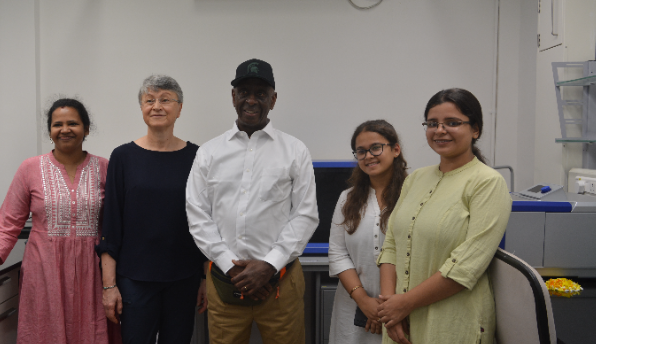One focus area of research under CASCADE's Regenerative Agriculture program is to gain insights into microbial diversity across various cropping and farming patterns and their role in soil health. The absence of dedicated research space and equipment for metagenomic extraction from diverse soil and plant samples hinders the management of critical soil health and the diverse ecosystem services offered by microbiomes.
The establishment of this laboratory facility serves two key communities: researchers and farmers. For researchers, especially those passionate about regenerative agriculture systems, the lab provides access to advanced instruments and facilities. This support is crucial for the next generation of scientists as they pursue knowledge and innovation in studying the microbiome from environmental samples.
For farmers, the data generated through various projects utilizing these instruments will be instrumental in improving soil health, enhancing crop yields, and adopting sustainable agricultural practices. By analyzing soil and environmental samples, we can develop insights and recommendations that directly benefit farming communities. This lab will serve as a bridge between scientific research and practical applications, ultimately supporting both researchers and farmers in achieving sustainable agricultural goals.
To study the microbiome of complex environmental samples, relying solely on culture-dependent methods was insufficient, as only about 1% of soil microbes were culturable. We aimed to integrate both culture-dependent and culture-independent approaches. While our facility supported culture-dependent studies, we lacked certain infrastructure for culture-independent methods.
With this project activity, we aim to achieve the following goals
Requirement Review: Extensive literature review and laboratory needs to identify essential instruments and equipment for metagenomic DNA extraction and analysis.
Vendor Discussions: Communicated with vendors to gather detailed specifications and options for various instruments, evaluating different brands and models to find the best fit for our requirements.
Instrument Selection: Based on the discussions and specifications, we selected the following instruments:
Quotation and Negotiation: The purchase department obtained quotations from different vendors. After reviewing these quotations and negotiating terms, we chose the most suitable options for procurement.
Outcome
 CASCADE, Somaiya Institute for Research and Consultancy
CASCADE, Somaiya Institute for Research and Consultancy
 parvathi.jr@somaiya.edu
parvathi.jr@somaiya.edu
 https://cascade.somaiya.edu/en
https://cascade.somaiya.edu/en
